Another compelling entry in this series, but a glance at what lies on the vast horizontal surface of my office desk.
There was a time, gentle reader, when I was most actively on toddler duty where my desk became piled with things as I only spent intermittent minutes at the desk, and I’d throw things and papers on the desk and they would pile up (sort of like has happened with my work bench in the garage over the last two years, again). But now that I am in the office all day, the desk is tidier; the bills are not lost; but I still have a few things that accumulate for future projects or as the result of other projects, as we shall see.
What do we have?
Supplies and tools to repair my mother’s jewelry box.

It stayed in the store room since we moved to Nogglestead not long after my sainted mother passed away in 2009. Like many of her things, it smelled of cigarette smoke, but in the intervening years, that smell has faded (and had been replaced with cat litter dust). As my beautiful wife’s rather inexpensive jewelry box has fallen apart (and I have been unable to find her a comparable unit–so many jewelry boxes are so small these days), I thought I would restore my mother’s jewelry box. I bought some screws to fix the hinged trays and some anti-tarnish fabric to re-line the drawers and trays, and….
Well. Like so many projects I line up, I gather the materials for them, and then I don’t actually start them because I am afraid I will screw it up. So the tools (not depicted) are on the desk and the supplies are on the desk, but I have yet to actually try to reline a tray.
Maybe sometime after the fence painting.
Two wooden crosses

Also from the store room. After our church remodeled sometime in the past, one of the congregant woodworkers made a number of crosses from the old altar rails, and the church sold them as a fundraiser. I bought one to make into a shadowbox for a visiting pastor who got called to a church out in Republic with whom we were sort of friends at the time. I never got around to that–I wanted to somehow make a background of the church’s sanctuary or exterior, but never did.
I might have gotten the other as a gift for my mother-in-law, or maybe I got three.
Nogglestead does not have any religious iconography decor. No crosses, no praying old men and/or women, no Jesus looking down on you and having his eyes follow you around the room. To be honest, I am not entirely sure what I will do with the crosses. Maybe I’ll make my way to the choir loft to get that good photo for a background. More likely they will ride the pine pressboard of my desk for a while until I put them back into the storeroom (he said, spelling it both ways in this post to improve his chances of finding this post in a search sometime in the future).
An old alarm clock.

An old alarm clock which I have not even dusted yet (a month and a half later). I think this was my wifes, as the one that got me through high school, college, and the first fifteen years of my “career” is still on the bureau in my bedroom. We have no use for this, since we use our phones as alarms now, but I can’t just get rid of it as it is not mine. And I keep forgetting to ask my wife if we can donate it.
Two silver platters.

Or maybe steel platters. I did dust them off after cleaning the store room over Memorial Day weekend, and I’ve thought about polishing them and putting them…. Well, somewhere. We don’t have anywhere to display them, and it’s not like we’re serving crumpets to the king here at Nogglestead.
I suppose I could put them in the anti-tarnish cloth for now.
By the way, the bag of spoons which I first mentioned as being on my desk in 2012 has made a return appearance as I keep meaning to getting around to polishing them and hanging them. But they’re very tarnished. Maybe I should see if I can use the new wire wheels for my drill or rotary tool on them. Most of them are just spoons from different patterns, not souvenir or collectible spoons, so it would not really diminish their value.
A State Street® Electronic Device.

I bought this little device at the Lutherans for Life garage sale in June. I wasn’t sure what it was, and I’m still not: Even though I have replaced the batteries and figured out how to turn it on, the LED screen doesn’t work right. It presents a grid of some sort, but not much else. It comes with a stylus, so maybe it was a cheap PDA type device or mere touchscreen calculator given away by the financial firm whose name is on the front.
I might crack it open to see if the screen would be easy to replace or if I could connect it to some other display peripheral just for fun, but this is the sort of project that I enjoy more in the ideation stage. Likely this will go into the store room or the trash. But not quickly.
Like I said, the desk is mostly clean and tidy, but these things are a bit out of place and will not likely be put into their places, or have their related projects completed, in the near term.
I wonder how the pace of Nogglestead’s change will slow once our children move out. Sometimes, it seems like they’re the only thing changing at all.
And a good prop bet might be “How many of these things will still be on Brian J.’s desk when they’re empty nesters?” I think the over/under is 2.
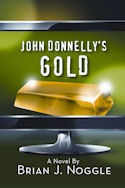
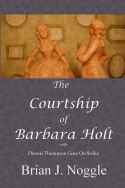



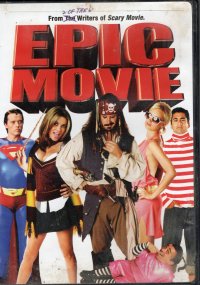 I guess this is the third in this line ([Genre] Movie) that I’ve seen; I saw
I guess this is the third in this line ([Genre] Movie) that I’ve seen; I saw 
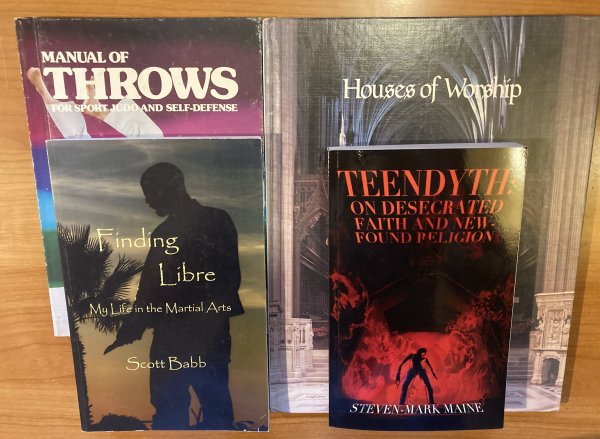

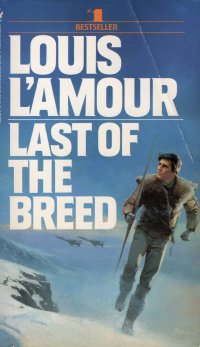 After reading
After reading 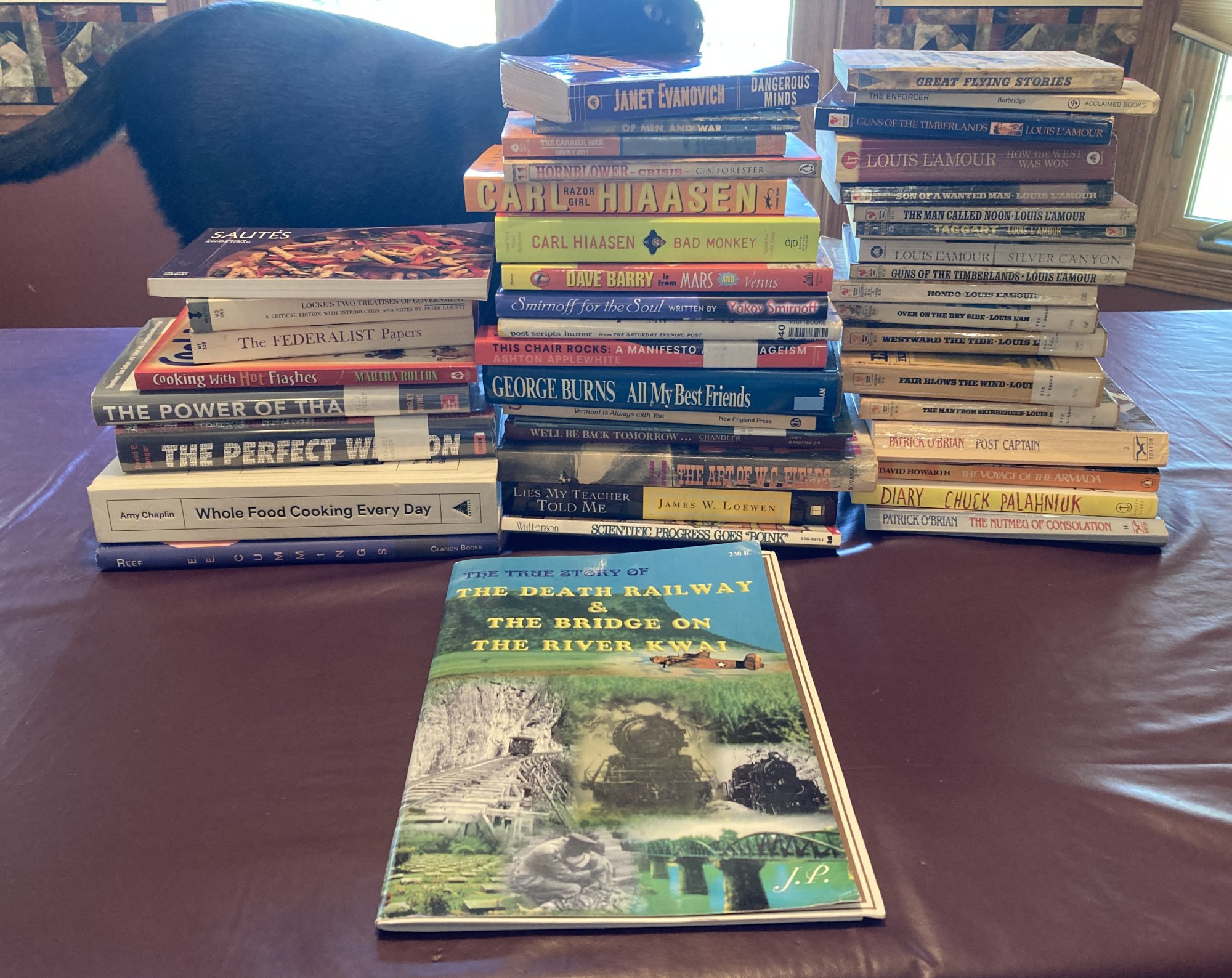
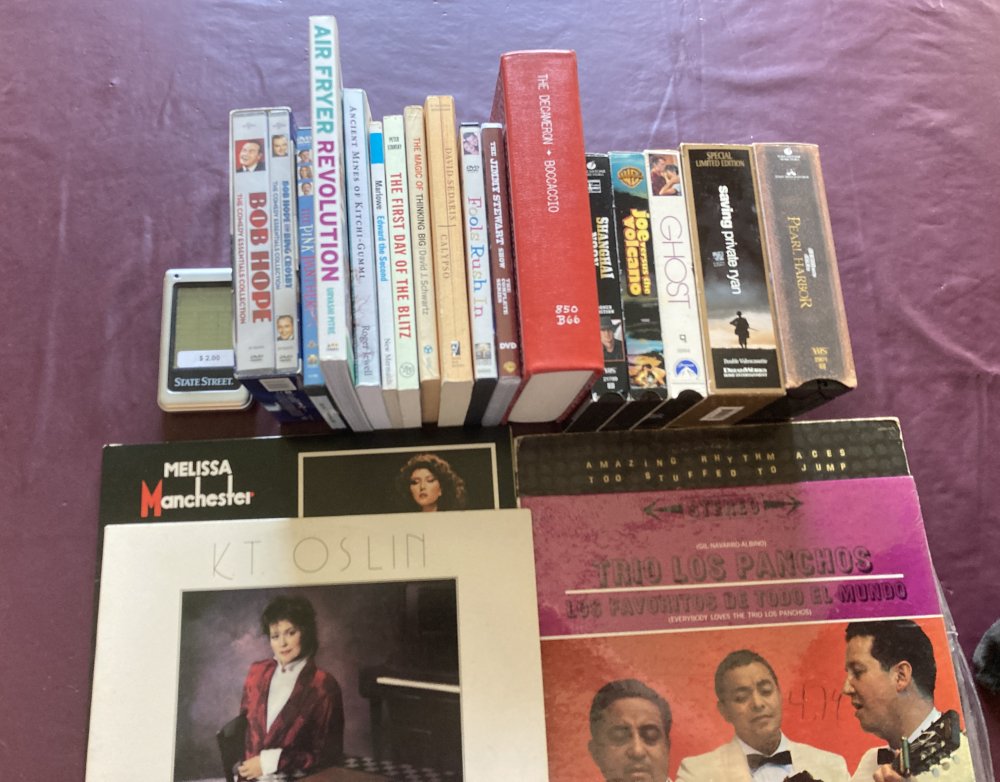
 This is the second book in the Bucky and the Lukefahr Ladies series; I read the first,
This is the second book in the Bucky and the Lukefahr Ladies series; I read the first,  I got this book
I got this book  I got three of these little Salesian Missions poetry collections
I got three of these little Salesian Missions poetry collections